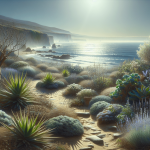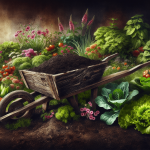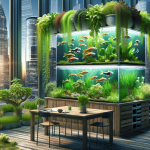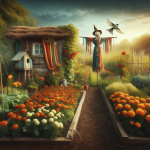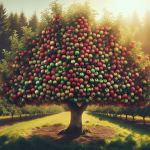This post may contain affiliate links. As an Amazon Associate, we may earn commissions from qualifying purchases.
Have you ever wondered how you can transform a corner of your garden into a soothing oasis, teeming with aquatic plants and bustling with wildlife? Creating a garden pond isn’t just about aesthetics; it’s about fostering an environment where nature thrives. Whether you have a sprawling yard or a compact outdoor space, a thoughtfully designed pond can become the crowning jewel of your garden, attracting birds, insects, and even small mammals. Let’s dig into how you can build a garden pond that not only uplifts your living space but also supports a miniature ecosystem.
Understanding the Benefits of a Garden Pond
Before we get our hands dirty, it’s important to appreciate the impact a garden pond can have. A pond can significantly enhance the biodiversity of your garden. It offers a water source for birds, provides habitat for frogs and newts, and supports a variety of aquatic plants that you wouldn’t otherwise have a chance to nurture.
Ecological Impact
Adding a pond positively impacts your local ecosystem by fostering an array of wildlife.
| Plant Type | Wildlife Benefited |
|---|---|
| Aquatic Plants | Frogs, insects, and birds |
| Bog Plants | Butterflies, bees, and amphibians |
| Floating Plants | Fish, snails, and small aquatic insects |
Aesthetic and Relaxation Benefits
Beyond ecological advantages, a pond can serve as a tranquil focal point in your garden. The gentle sound of water can be incredibly soothing, and the visual appeal of a pond can transform your garden into a sanctuary.
Finding the Perfect Location
Location is everything when it comes to building a pond. Choosing the right spot can be the difference between a thriving ecosystem and a stagnant pool.
Sunlight and Shade
Most aquatic plants need at least 6 hours of sunlight a day, so aim for a spot that enjoys a good balance of sun and shade. Too much sun can lead to algae blooms, while constant shade might prevent your plants from thriving.
Proximity to Trees
While trees can offer valuable shade, falling leaves and debris can clutter your pond. Choose a spot a few meters away from large trees to minimize cleaning efforts.
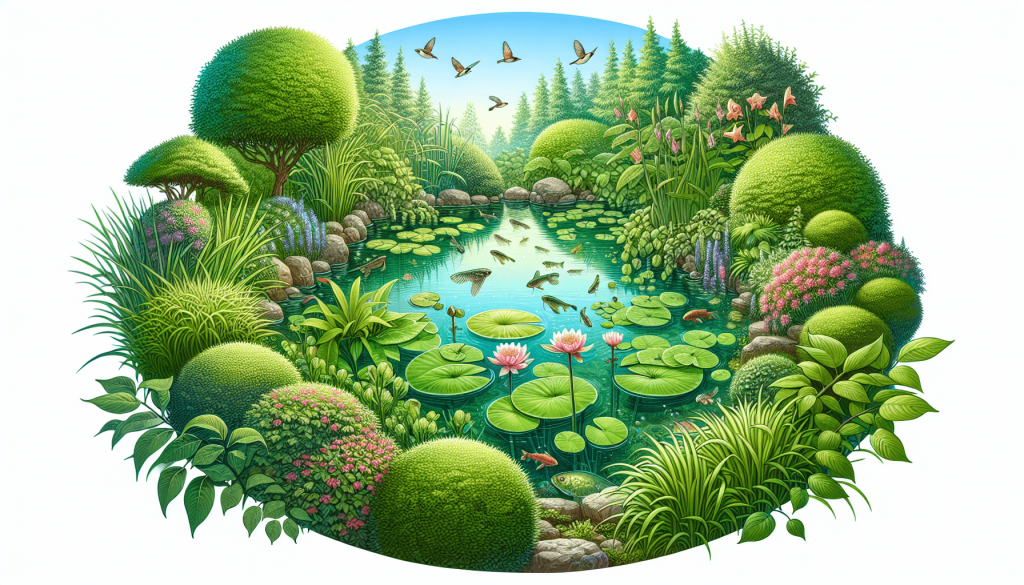
Planning Your Pond
Before you start digging, planning is crucial. You’ll need to consider the pond’s size, shape, and depth.
Size and Shape
The size of your pond will depend on your garden’s layout and your personal preferences. Generally, the larger the pond, the more stable the ecosystem. Think about whether you want a formal geometric shape or a more naturalistic outline.
Depth Considerations
A variety of depths within the pond can support different types of aquatic plants and animals. A good rule of thumb is to have a section of your pond that is at least 2 feet deep to give aquatic life a refuge from extreme temperatures and predators.
Pond Liners
Choosing the right pond liner is essential to prevent water from seeping into the soil.
| Type of Liner | Pros | Cons |
|---|---|---|
| PVC Liners | Flexible and easy to install | Prone to cracks in freezing weather |
| EPDM Rubber Liners | Durable, easy to shape | More expensive than PVC |
| Pre-Formed Liners | Simple to install for beginners | Limited in shape and size |
Excavate and Lay the Foundation
Once your planning is completed, it’s time to get physical. Excavate the area you’ve chosen for your pond and create varying levels to support different types of plants.
Digging the Pond
Use a garden hose to outline the pond’s shape on the ground. Start digging at the deepest point and work your way outwards. Remove sharp objects from the bottom to avoid puncturing the liner.
Installing the Liner
Lay down an underlayment to protect your liner from sharp rocks and roots. After placing the liner, make sure it fits snugly into every corner of the pond. Secure the edges with large rocks or bricks.
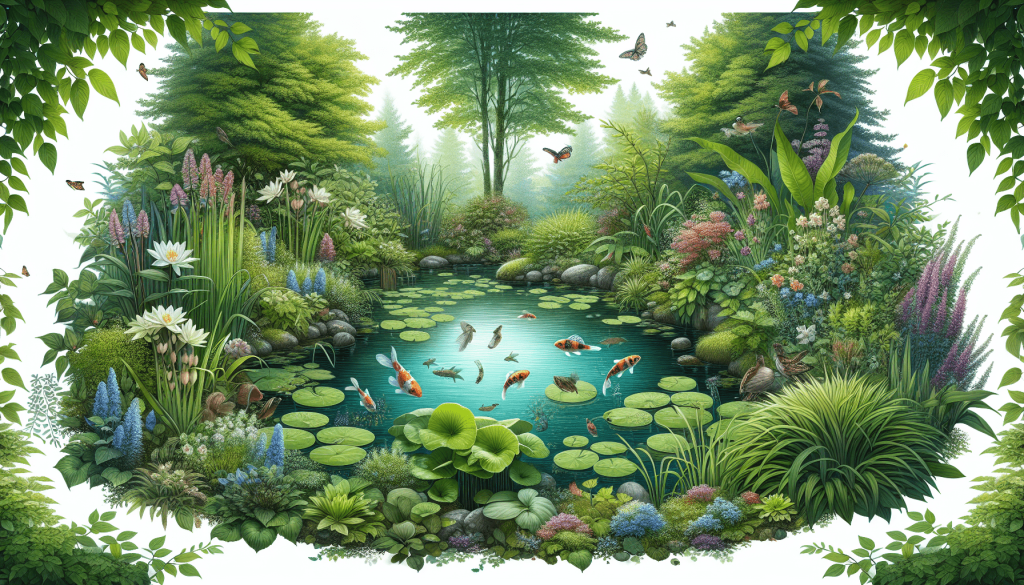
Adding Water and Plants
Your pond is now ready to be filled with water and adorned with aquatic plants.
Filling the Pond
Fill the pond slowly using a garden hose, allowing the liner to settle into place smoothly. Check for any folds or wrinkles as the water level rises and adjust as needed.
Planting Aquatic Vegetation
Introduce a mixture of submerged, marginal, and floating plants to create a balanced ecosystem. Submerged plants like hornwort provide oxygen, while floating plants like water lilies offer shade and reduce algae growth.
Introducing Wildlife
A pond isn’t complete without its aquatic inhabitants. Carefully select and introduce wildlife to contribute to the pond’s biodiversity.
Fish
Fish like goldfish or koi can add a splash of color to your pond. Ensure the pond is deep enough to support them, especially in colder climates where the water can freeze.
Amphibians
Frogs and newts will naturally find their way to the pond. To support these creatures, provide plenty of plants and hiding spots around the pond’s edge.
Insects
Dragonflies and damselflies lay their eggs in or near water, and you’ll often see these beautiful insects hovering around a well-maintained pond.
Maintaining Your Pond
A garden pond requires regular maintenance to keep it healthy and attractive.
Water Quality
Regularly check the pond’s water quality, ensuring that it remains clear and free from algae. Use a pond filter if necessary to keep the water circulated and clean.
Plant Management
Trim back overgrown plants and remove any dead leaves or debris that could foul the water. Ensure that plants are not crowding each other out and that there is a good balance of oxygenators and floaters.
Seasonal Care
Ponds need different care depending on the season. In the spring and summer, monitor for algae blooms, while in fall and winter, focus on removing fallen leaves and ensuring fish have a deep area of the pond to overwinter.
Enhancing Your Pond
Once your pond is established, you can start thinking about additional features to make it even more enjoyable.
Water Features
Adding a fountain or waterfall can help oxygenate the water and create soothing sounds. Make sure to install a pump that is powerful enough to run these features.
Lighting
Solar-powered lights around the pond’s edge can create a magical ambiance at night. These lights are also eco-friendly and easy to install.
Seating Area
Consider creating a small seating area near the pond. A bench or a couple of chairs can provide a perfect spot for relaxing and watching the wildlife.
Troubleshooting Common Issues
Even well-planned ponds can encounter issues. Here are some common problems and how to address them.
Algae Overgrowth
Algae can quickly become a problem in sunny ponds. Introduce more floating plants to provide shade, and consider using an algaecide if the problem persists.
Murky Water
Murky water can be caused by a variety of factors, including fish waste and decaying plant material. A pond filter or UV clarifier can help keep the water clear.
Leaks
If you notice a drop in water level that isn’t due to evaporation, check for leaks. Patch small holes in the liner with a repair kit designed for pond liners.
Frequently Asked Questions
In your journey to building and maintaining a garden pond, you might have some questions. Here are a few commonly asked questions and their answers.
Can I Use Tap Water to Fill My Pond?
It’s generally safe to use tap water, but be aware that it often contains chlorine and other chemicals. Let the water sit for 24 hours before adding plants or wildlife, or use a dechlorinator.
How Do I Prevent Mosquitoes?
Introduce fish like goldfish that eat mosquito larvae, and ensure there’s good water circulation to prevent stagnant water where mosquitoes can breed.
When Can I Introduce Fish to the Pond?
Wait at least a few weeks after planting to give the plants time to establish and create a balanced environment before introducing fish.
How Do I Attract Frogs to My Pond?
Frogs are naturally attracted to water sources. Provide plenty of hiding spots around the pond’s edge and avoid using pesticides in your garden.
Final Thoughts
Building a garden pond to support aquatic plants and wildlife is a rewarding endeavor that transforms your garden into a dynamic, lively space. With thoughtful planning and regular maintenance, your pond will become a sanctuary for both you and the local wildlife. So, roll up your sleeves, grab your spade, and create your own watery haven where life can thrive.
Hope you’ve found these insights as fascinating as I have!

